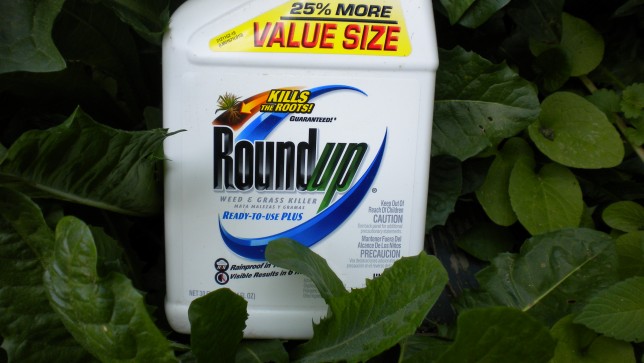The World Health Organization’s cancer agency IARC has published the full report which caused a huge worldwide response, when they announced earlier this year that the World’s most sold herbicide, glyphosate, is a probable human carcinogen.

Full IARC Report: http://monographs.iarc.fr/ENG/Monographs/vol112/mono112-09.pdf
The assessment by the International Agency for Research on Cancer (IARC) of glyphosate, which is used in herbicides with estimated annual sales of USD 6 Billion, is of special concern to Monsanto, the company that brought glyphosate to market under the trade name Roundup in the 1970s.
Over 80% of GM crops worldwide are engineered to be grown with the herbicide.
The IARC has no regulatory role and its decisions do not automatically lead to bans or restrictions, but the report has put massive pressure on regulators and the Biotech industry, who rely on glyphosate for a large percentage of their profits.
The IARC reached its decision based on the view of 17 experts from 11 countries, who met in Lyon, France, to assess the carcinogenicity of 5 organophosphate pesticides.
Since the IARC report was released in March 2015 many countries have been looking at possible bans on glyphosate-based herbicides and Sri Lanka even announced a complete ban. Supermarkets across Europe have also removed glyphosate-based herbicides from their shelves.
















I read the report, and I’m not certain the conclusion of the report is as reported? When I read point 6.1 of the evaluation in conjunction with point 6.3, it doesn’t seem as damning. Am I reading something incorrectly?
6. Evaluation
6.1 Cancer in humans
There is LIMITED evidence in humans for the carcinogenicity of glyphosate. A positive asso- ciation has been observed for non-Hodgkin lymphoma.
6.2 Cancer in experimental animals
There is sufficient evidence in experimental animals for the carcinogenicity of glyphosate.
6.3 Overall evaluation
Glyphosate is probably carcinogenic to humans (Group 2A).
They’re saying:
1. The epidemiological evidence, limited as it is (by system-imposed funding constraints, I might add), indicates glyphosate probably causes cancer in humans.
2. Lab tests on mammals sufficiently establish that it does cause cancer in mammals.
Combining (1) and (2), and in light of the fact that it’s not ethically possible to perform a lab test on human subjects, they conclude that within the limits of science, the evidence is that glyphosate “probably” (a term of art) causes cancer in humans. The lab evidence is already sufficient, and they’re confident that better epidemiological study would reinforce and confirm the existing “limited” evidence.
No longer will INFORMED Americans trust any regulatory agency that colludes with Monsanto, Dow, Bayer, Dupont, Syngenta, BASF, or any other cancer-food engineers who proclaim that consuming chemical pesticides is good for humans and can “save the world” from famine and drought. Glyphosate is a known Neurotoxin and harmful
I run a web site and I am interested in information on the global perspective on Roundup, glyphosate and GM crops.
This only adds to other concerns about Glyphosate. This is probably the last drop for Sri Lanka, who already had a lot of deaths in the Agricultural sector linked to Glyphosate. Certain parts of the country have hard water containing various heavy metals, which easily bind with Glyphosate to form products that cannot pass through the kidneys and people subsequently develop Chronic Kidney Disease, killing them.
I am very interested in this as a gardener. If glyphosate is toxic in the amounts we use when spraying at home or edging on the farm, what are the alternatives for effective control of Mellow, cooch, dock and others?
Glad you asked. First, question the need to remove these plants. Is it just for aesthetic purposes? These plants actually provide benefit to the soil, and the flowers and seeds provide nectar and pollen for beneficial native insects. They also provide shade, hold moisture, and share root structures with your crops, making your garden better.
If the plants start to intefere with food production, its easy to cut the roots below the soil line with the proper tool (tried a hori hori or a stirrup hoe?), leaving the root to decay to add nutrients and air space to your soil. If you must spray, purchase Burnout or other products, but be aware that the soil ph can be changed. Here are two great websites for additional non-carcinogenic products / methods.
Good luck!
http://beyondpesticides.org/programs/bee-protective-pollinators-and-pesticides/what-can-you-do/the-well-stocked-hardware-store
http://www.pesticide.org/